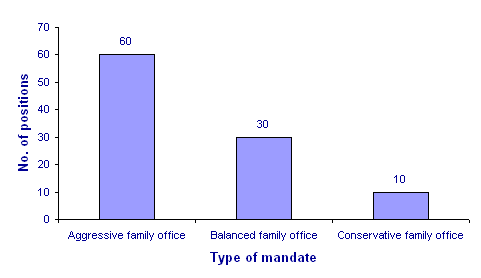Number of positions in single manager hedge funds

Consistent with the appetite for larger numbers of holdings, a sizeable number of family offices are launching their own internally-managed FOHFs. More are also launching in-house single manager hedge funds, provided they have an investment edge and the strategy looks viable. In both cases, the commercial motive is significant. There is a clear trend in Europe for family offices to spread costs and build critical mass in managed assets by opening up funds and broader services to other families or ultra-high net worth individuals. This follows a pattern that has already become well-established in the US. Unfortunately, although the spirit may be willing when it comes to large numbers of single hedge fund investments, in the case of family offices the flesh is not always able. Family offices are notoriously thinly staffed and they have traditionally relied on private networks of contacts to identify new managers and investment ideas. The acquisition of unique market knowledge becomes difficult as the universe of hedge funds grows in size and geographical distribution. As a result, offices are increasingly turning to specialist hedge fund marketers as a source of intelligence or, where the office has internal hedge fund management capabilities, to prime brokers. Indeed, nearly 20 per cent of the family offices indicated they use independent external service providers for hedge fund research and even portfolio construction. FOHF managers need not panic yet, however. Although the general appetite of family offices for FOHFs may be declining, there are still some situations where they will remain an important part of a portfolio — either as a means of accessing funds that are otherwise closed, or as a way to assess the investment potential of new sectors and geographies. And anyway, there may be a trend away from all hedge funds. The Swiss family offices have a hedge allocation that is now 15 per cent lower than the UK ones, as they seek new sources of alpha from assets such as private equity and property.
